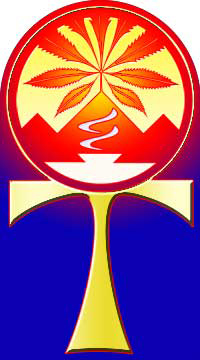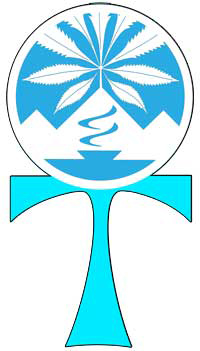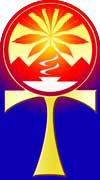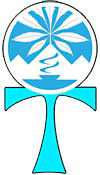comprehensiveness of beliefs
The courts often consider the comprehensiveness of your religious beliefs in determining if a religion is legally valid.
legal standards
“(2) is part of a religion that is comprehensive in nature and consists of a belief system as opposed to an isolated teaching;” —Malnak v. Yogi
“4. Comprehensiveness of Beliefs: Another hallmark of “religious” ideas is that they are comprehensive. More often than not, such beliefs provide a telos, an overreaching array of beliefs that coalesce to provide the believer with answers to many, if not most, of the problems and concerns that confront humans. In other words, religious beliefs generally are not confined to one question or a single teaching. Africa, 662 F.2d at 1035.” —United States of America v David Meyers
“a recognized creed and form of worship,” —IRS definition of a church
“a formal code of doctrine and discipline,” —IRS definition of a church
religious freedom reply to IRS standards
The second criterion is flawed because recognized creed and form of worship is sometimes imperceptible even in major denominations. The Unitarian Universalists, for example, a denomination of approximately 200,000 members, follows
No formal or central creed. Their ministers and members are not required to pass any test of faith. Freedom of belief among Unitarians is broad enough to include agnosticism, humanism, even atheism, on the one hand, and, on the other, a belief in God which can be manifested in a wide range of definitions - from that of a “personal god” to a an “Ultimate Reality.” May Unitarians feel the word “God” a stumbling block to communication about the supreme matters of the spirit. They choose to avoid an excessive use of all words that stand in the way of, instead of encouraging, profound understanding.
Unitarians feel that “[t]here is clearly a pride in being creedless, in having open membership.” Moreover, a religious body may believe only in doing “whatever is right.” A “recognized” form of worship as a criteria immerses the IRS in intractable sectarian strife. The form of worship may vary significantly among churches within the same denomination.
Some forms of Unitarian worship resemble services in other Protestant churches. In one city, a Unitarian church may have the atmosphere of a Lutheran or Episcopalian or Congregationalist service. Each church is free to develop a service of worship that best serves its people, and Unitarian ministers through long tradition are accorded the right of a free pulpit. Unitarians employ many variations of the great human-divine theme of religion as expressed in meditation, music and poetry.
Furthermore, commentators note that a Quaker meeting for worship has no fixed, pre-arranged character. It is held without ritual or an ordained minister, and with no outward sacraments or formalized program. It takes place in a meeting house without a steeple, stained-glass windows, alter, credos or organ . . . . It should be emphasized that the form of Quaker worship and ministry is not prescribed or uniform.
The Plymouth Brethren “oppose formalism in worship and have no liturgy.” — “Defining Religion in American Law” by Bruce J. Casino, International Coalition for Religious Freedom
The fourth requirement, that a church have a formal code of doctrine and discipline, may contradict a fundamental tenet of an organization that it have “no traditional doctrine.” For example, the Quakers do not have a “written or spoken formal creed . . . . The Society never requires of its members the acceptance of any formula or belief.” The Plymouth Brethren “oppose man made creeds as being human additions to the Word of God. Many other evangelicals share this view.” — “Defining Religion in American Law” by Bruce J. Casino, International Coalition for Religious Freedom
Kemetic or ancient Egyptian religion
The Great Library at Alexandria was a temple of Pr Ntr Kmt (Kemetic Witchcraft), headed by a High Priestess of Aset (Isis) or High Priest of Ptah or High Priest of Serapis.
Pr Ntr Kmt, ancient Egyptian Witchcraft, invented mathematics, including algebra, geometry, trigonometry (Imhoteop), and calculus (Hypatia, although her writings were destroyed by devout Christians after the author of the Nicean Creed (the mainstream Christian creed) joined with other Bishops and monks to gang-rape, torture, and murder Hypatia).
Pr Ntr Kmt invented science, including astronomy/astrology, chemistry/alchemy, botany/biology, medicine, and physics. The word “chemistry” is based on the name Khem. Imhotep (chief architect of the Great Pyramids and High Priest of Ptah) created the scientific method. Most of the Western and Hindu astrological signs are from the Egyptian divine: Ares=Amon-Ra, Tarus=Ptah, Gemini=Heru and Bast, Leo=Sekhmet, Virgo=Seshat and Aset, Libra=Ma’at, Scorpio-Selkhet, Aquarius=Hapi. Ramses the Great set the four cardinal points (Ares, Cancer, Libra, and Capriconrn) in the sky.
More than 2/3rds of the modern medications in use today (by total consumption) are direct derivatives of the herbal remedies created by ancient Egyptian Witches.




